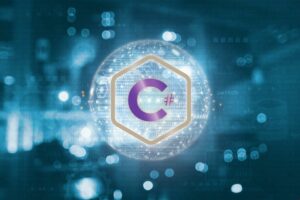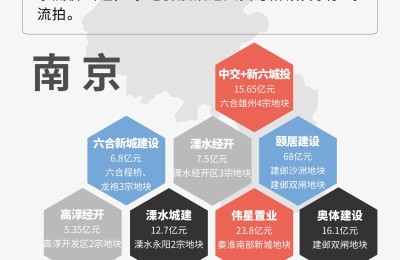Content
They can be a wide range of industries, but all share some common characteristics. Enterprise businesses typically need more infrastructure and financial and human resources to function properly. Retail businesses are enterprise businesses that sell products or services to customers. That can include everything from small mom-and-pop shops to large department stores.
Top 5 industrial IoT use cases and examples – TechRepublic
Top 5 industrial IoT use cases and examples.
Posted: Tue, 08 Nov 2022 08:00:00 GMT [source]
Rossum is a highly customizable document-management-based business solution used in many settings including accounts payable and logistics. Its single document gateway system is powered by a self-learning AI that scans, collects, and validates documents such as invoices and forms. The solution provides users with a wide range of customization and automation tools to manage document traffic may they be invoices and purchase orders to packing lists and claims. Its intelligent engine understands documents and can be configured to control and act according to set rules. Thus, it is an invaluable business solution for companies such as National Geographic, Twitter, and GoDaddy.
The Transcendent Customer Experience Is Already Here
It’s designed to centralize and optimize operations with its connectivity while reducing manual labor. SCM solutions enable enterprises to handle internal processes and third-party partners across their supply chain. So, businesses can establish a direct connection between manufacturers, distributors, and retailers. This helps to minimize miscommunication between companies and improves supply chain visibility.

Failure to comply with such laws might result in severe financial and legal consequences. Thus, having specialized software to assist HR professionals in their work is imperative for most enterprises. The (non-exhaustive) list above makes abundantly clear that there are many different roles inside a typical enterprise. Before going straight to the definition of enterprise software, we need to take a step back and ensure we’re on the same page when it comes to the meaning of “enterprise” itself. This requires careful planning of yourERP upgrade, as well as anERP evaluationand review of yourdeployment options. As enterprises adopt digital technologies in every part of the business, they are fundamentally changing the way they operate.
Procurement, Accounting, And Finance
If this is your first time implementing an ERP platform, going with the off-the-shelf solution is your best bet. Later on, when you have familiarized yourself with the interface and its functions, you can add more modules and play around with configurations. As it turns out, the most popular ERP implementation approach is the hybrid approach (29.7%), followed closely by having all business units using the same module (24.75%). If you are still using legacy ERP systems but looking forward to benefiting from cloud ERP, then the hybrid approach makes sense. Jira — Work management tool that collects requirements, manages test cases, and tracks bugs and issues.
Built for the digital age, today’s ERP cloud embraces mobile, social, analytics, and the latest emerging technologies. Cadbury, a global confectioner and maker of the popular chocolate Cadbury egg, also successfully implemented an ERP system. The company had thousands of systems but could not keep pace with its rapid growth and used ineffective warehouse management systems.
Amazon Web Services
A global leader in online payments, Stripe has disrupted the industry and its technology became a benchmark in smooth payments, fraud detection, subscription management, etc. It’s fairly easy to use and offers recurring payments that some companies might find useful. Stripe charges a small fee on each payment so you don’t have to invest large sums into different payment methods.
It can conduct cost analyses to better manage cash flow and forecast future growth. Using an ERP product to perform these functions can reduce human error and help cut costs. You are excited about rolling out the ERP solution but are your intended users excited about it, too? Before you complete or even begin the process, make certain that your employees are on board and that they are educated about an ERP. Thus, proper training is important for them to maximize the software and for them to know exactly how to use the tools to get the results they need.
The software that is responsible for the core functionality of the system and provides the interface between the underlying hardware resources and application software. Operating Systems such as Windows, Linux, macOS, Android, and iOS come under the system software category. No single software application can facilitate all the needs of an organization. In most cases, there are specialized EAS applications suited for different requirements of the organization. However, its importance is further emphasized in an enterprise environment as this software facilitates the mission-critical function of the organization. The software should be able to scale according to the growing business needs without compromising stability or functionality.
This has made it a universal solution that can be utilized by businesses, regardless of the industry they are in. Since it has multifarious functions under a single umbrella, this ERP platform can slowly replace legacy applications or redundant software. Plus, it is modular, allowing you to customize it to your needs at any time. Before we discuss the many benefits of ERP software, let us first talk about what it is.
When companies use their BI correctly, they can identify their weaknesses, strengths, risks, and opportunities. Enterprise apps make running organizations easier by directly solving business problems. When you start with clarity as to your business needs and define a strategy that enables you to choose the best enterprise apps for those needs, you’ll wonder how you ever managed your business without them. Implementing a cloud-first EAS solution will be ideal for many organizations moving forward with many other services like data warehouses, endpoint security, email, and IT also available as cloud services. The primary obstacle for a cloud-first approach for EAS was the security and compliance requirements.
Enterprise software
Enterprise software is a computer application that aims to assist big companies with several needs such as data analysis, sales and marketing management, customer service, and many others. Typically, these tools are designed to serve a large number of https://globalcloudteam.com/ users with high scalability and integration capabilities. Modern ERP systems are open and flexible – and can easily integrate with a wide range of software products using connectors or customized adaptors, such as application programming interfaces .
- Gone are the days when companies needed to wait weeks or even months after a sales cycle to understand market impact — now it’s right at their fingertips at any point in time.
- While this may seem similar to ERP, EAM focuses primarily on tasks that revolve around protecting assets.
- If the leadership wants to check the quality of leads provided by the marketing department, they can do so with just a few clicks.
- ERP system and its benefits are helping businesses to strive hard and keep their firm place in the giant competitive world.
- There is always a risk of data loss when you are consolidating or standardizing data from different apps.
- Each solution will be presented with a visual example and key features with an explanation of the tool and what is best used for.
- Inventory ordering software is typically separate from the inventory control system, as it directly links enterprises to their primary suppliers.
On-Premise ERPs, also known as legacy/monolithic ERPs, are installed in the organization’s hardware present at their facilities. This requires the user to install all required hardware devices and look after their operating conditions as well. This also includes having an in-house IT team that looks after its maintenance and minor troubleshooting.
This app is very convenient when it comes to leaving request approval, looking for coworkers’ contact details, or planning career progression. It offers various services like cloud storage, file synchronization, and personal cloud. It lets you store all your files in one place, be it photo libraries, documents, or backups. Dropbox is a reliable cloud service provider as it is easy to use and highly secure. Cloud ERP and SaaS systems – like Acumatica – are also an option and run on a business’s cloud platform rather than an on-premise network.
Each of them has its own unique processes that have been up and running for many years. The market offers a large number of low-code BPM platforms that allow companies to create visual representations of their processes, remove bottlenecks, and simplify decision-making. Business process management refers to a wide range of methods and tools used to document, analyze, and automate the company’s workflows.
ERP Implementation Steps
Extensive features are needed to provide participants with the best possible experience during online events, which are in no way inferior to classic offline ones. Rather you are a professional designer or an average user with no technical knowledge, you can use the tool to create multiple presentations and engaging infographics in an interactive yet simple way. Visme is especially types of enterprise systems helpful for those people who are in the fields of education and marketing. It can also be used to present complex data in an intuitive way with multiple chart templates. You can create an account in a matter of minutes and start working on your project right off the bat. Capterra reviewers give Visme a very solid 4.5 stars rating while G2Crowd reviewers give it a 4.6.
While implementing ERP, it’s always a good idea to have someone on the team who knows what they’re doing. If nobody from the team has been a part of an ERP implementation team previously, you can always hire external consultants who can guide you through the entire process. Resource allocation and timely dispensation is one of the key factors that contribute to the success of ERP implementation. Make sure that you plan comprehensively for all kinds of contingencies and have the required resources available all the time. A CRM helps simplify all client-facing interactions, and the ERP ensures that your operations run smoothly. ERP solutions can have a dedicated module for client relationship management as well, and you can also integrate the CRM of your choice.
Epicor ERP
SAP was created in Germany in 1972 by five former IBM employees who envisioned a software integration of all business and data processing in real-time. An ERP system’s functionality allows for streamlined workflow and easier business processes no matter what industry you work in. Any business or organization in need of managing time-consuming daily activities in one place will benefit from ERP solutions – this includes mid-market and small businesses.
Our technical representative will get back to you to discuss your enterprise app development requirements. InFlow mobile app adds an advantage to working and staying productive from any location. Keep track of your inventories and stock get updated in real-time whenever you work. It has opened several doors for employees and employers to official work instantly.
Backup software provides a reliable recovery method if enterprises experience system malfunctions, power outages, or other technical troubles. This solution acts as a security measure to ensure there is a copy of every data set in case of emergency. It also offers additional data storage for both legacy and cloud-based software. Inventory ordering software is typically separate from the inventory control system, as it directly links enterprises to their primary suppliers. With an ordering solution, managers can pull product catalogs, compare vendor pricing, and generate digital purchase orders. Sophisticated models even consolidate shipments, saving businesses order and handling costs.





